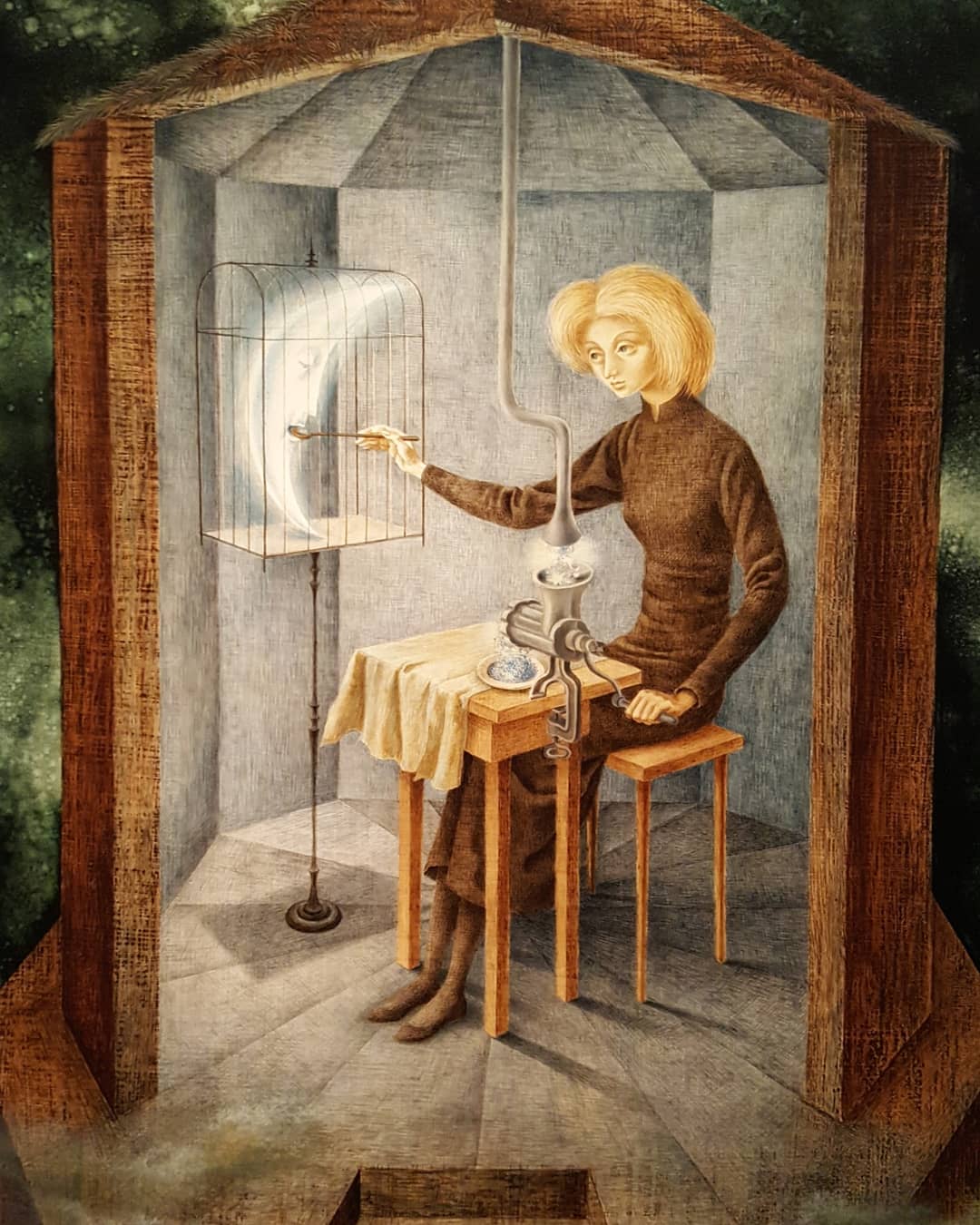3 Questions for Ingrid
What was your process for creating these pieces?
Grind is an ekphrastic poem inspired by a painting by Remedios Varo called Papilla Estelar. I was intrigued by the woman in the painting—her tired visage, drab clothing, and slumped posture, and I wanted to create something that was about her. There was such power and elevation in that painting, but also a palpable exhaustion, and I wanted to express that. In my creative work, I’m endlessly inspired by female surrealist painters like Varo, Leonora Carrington, and Helen Lundeberg.
Hunza is part of a series of micro-memoir pieces based on places where I’ve lived and traveled. It was a memory I’d carried for a long time. For this series, I wanted to focus on these very intense, encapsulated experiences that, taken together, created a wider sense of interconnection and meaning.
What is the significance of the forms/genres you chose for this work?
For me, a poem seemed to be the way into Varo’s painting. It gave me a chance to connect with the image in a very intimate way but also provided a framework that was spare and concise. It seemed the best way for me to express the complex feelings I experienced when viewing Varo’s work.
For Hunza, I knew I wanted to write about this experience, but it didn’t necessarily seem to fit into a larger work. The micro-memoir form seemed well-suited to this short, but powerful memory.
What is the significance of this work to you?
I’m very happy to see Grind published because I love sharing the art of female surrealists like Varo. Perhaps this will inspire someone to make their own investigations into these artists and create more work in honor of them. When I’m feeling uninspired, I will often turn to surrealist art to get my creativity flowing again, and it’s been an important part of my growth as a writer.
Hunza harkens back to a very tumultuous period of growth in my life, when I was, to some extent, discovering the kind of person I want to be in the world. There’s a certain naivete in the piece, but also a sense of isolation and longing. That journey of discovery is nowhere near the end, but this was a very special time in my life when I felt that I was learning a lot about the world and myself.
Ingrid L. Taylor is a poet, science writer, and veterinarian whose poetry has recently appeared in the Southwest Review, the Ocotillo Review, FERAL: A Journal of Poetry and Art, Horse Egg Literary, and others. Her poem “Mermaids” received Punt Volat Journal’s Annual Poetry Award in 2021. Her nonfiction work has appeared in Sentient Media. She’s received support for her writing from the Playa Artist Residency, the Horror Writers Association, and Gemini Ink, and she has an MFA from Pacific University. Find her online at ingridltaylor.com.
